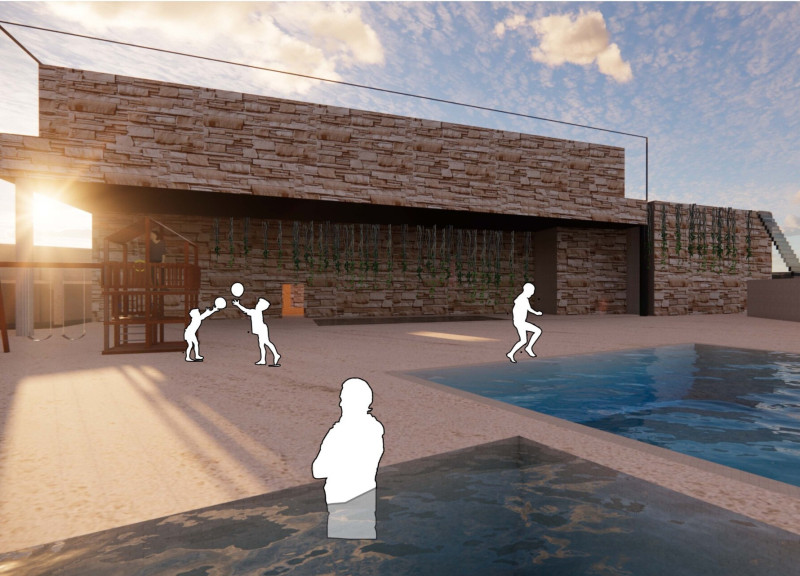5 key facts about this project
The Hotel Vineyard lies within a beautiful landscape that forms a natural backdrop for the experience of wine-making. The design aims to deeply engage guests with the surrounding vineyard through its creative layout and thoughtful spaces. It emphasizes not just function, but also the connection between visitors and the land, creating a journey that enhances their stay.
Architectural Layout
The layout centers around an intentional circulation route that guides guests through the site. This pathway leads visitors closer to the vineyard, offering fresh views and a sense of progression. As guests navigate the space, they are encouraged to appreciate the changing landscape around them. Each turn provides an opportunity to connect with the environment, whether through sight, sound, or texture.
Material Selection
The design incorporates heavy stone walls that provide a strong, tactile presence. These walls stand in contrast to large openings that let in natural light and create an airy feel inside the building. The mix of solid surfaces and voids is purposeful, adding both stability and openness. The presence of climbing vines on the exterior signals a relationship between the structure and the vineyard, merging nature with the built environment.
Social Spaces
Strategically placed communal areas encourage social interactions among guests. These spaces, designed to foster conversation and connection, invite visitors to gather and share experiences. Smaller nooks are included throughout the hotel, ensuring there are inviting spots for quiet conversation or relaxed reflection. This arrangement enhances the sense of community within the setting, allowing guests to engage with each other naturally.
Guest Experience
Rooms are thoughtfully elevated to provide varying views of the vineyard, ensuring that guests appreciate the surrounding beauty. Each space is oriented toward the landscape, integrating comfort and aesthetic enjoyment. Visitors can enjoy expansive sightlines that maintain a strong connection to the overall setting. The natural elements incorporated into the design blur the lines between indoor and outdoor, reinforcing the relationship between guests and the historical context of the vineyard experience.
The integration of nature within the architecture captures the essence of the vineyard, allowing guests to engage with their surroundings in a meaningful way. This thoughtful approach results in a space that feels both connected to the landscape and welcoming to those who enter.





















































